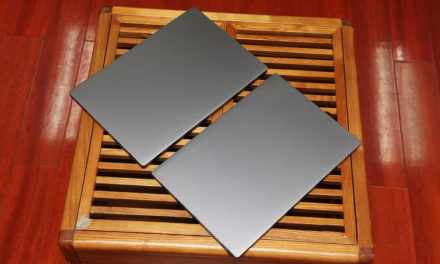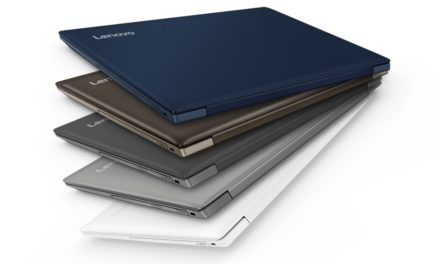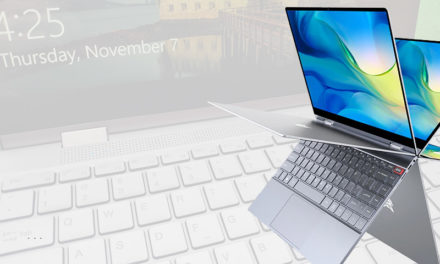
ASUS B53F: Elegance at a master's level
So the opponents will be the notebooks we have visited before, we will only write out the most important specifications, but by clicking on their name you can read the full article about them.
- Intel Core 2 Duo T6400 (2 GHz, 2M, 800 MHz)
- 2 GB single channel DDR2 800 MHz SDRAM
- NVIDIA GeForce GT 120M, 1 GB VRAM
- Intel Core 2 Duo SU7300, 1,3 GHz
- 4 GB DDR2-800
- Intel GMA 4500 MHD
- Intel Core 2 Duo P8700, 2533 MHz
- 2 x 2 GB DDR2 800 MHz Hynix HYMP125S64CP8-S6
- NVIDIA GeForce G 105M 512 MB RAM
- Intel Core2 Quad Q9000: 2 GHz 1066 MHz, 6 MB L2 cache
- 4 GB dual channel DDR3 1066 MHz
- NVIDIA GeForce GT 130M, 1 GB GDDR3 VRAM
- Intel Core i7 processor 620M: 2,66 GHz - Turbo Boost: 3,33 GHz
- 2 × 2 GB DDR3 1066 MHz CL 7-7-7-20 CR dual channel mode
- NVIDIA GeForce 310M - 512 MB DDR3 VRAM
- Intel Core i7-720QM processor (1,60 GHz, Turbo Boost up - 2,80 GHz, 6 MB L3 cache)
- ATI Mobility Radeon HD 5870, 1G GDDR5 VRAM
- 8192MB (2GBx4) DDR3 1066
Let's look at the results:
The CPU Queen test ended with a bit of a surprise, we got pretty much the expected result, but this time the biggest fighter is bleeding, ahead of all Core iXs, and the Core 2 Duo Quad - even if a hair's breadth - outperforms it. The weakest member of the competition is the SU7300, we were not surprised by its last place. It may have been a bit of cruelty to start in this field, however, anyone thinking of hair-thin machines will at least see how much speed they have to give up in exchange for comfort.
The Core i7 720QM has already struck here and beat the field high. It was a small surprise that in this case the SU7300 was also right, ahead of the T6400. We got one of the most beautifully scaled results this time.
Well, the order we've seen so far is completely upset, the Core 2 Quad has swept everyone through. But even more surprising is the huge decline in the Core i5, even preceded by the dual-core P8700. Poor SU7300 closed again in last place.
The field is falling apart, the Core 2s are struggling with a significant lag. In their battle with each other, the T6400 wins, luckily the SU7300 doesn’t lag far behind, but as usual it rents the last spot. Of the new generation processors, of course, the Core i7 720QM wins, and the Core 2 Quad defeats the i5 again in a big battle.
Our most powerful processor in theory is left out of the competition, because we didn't take the test on the 720 QM that year, but the others were still in a big battle. Still in deep flight, the SU, alongside the two Duo head-to-head, with a significant advantage over them in the i5 and then in a huge battle, the Q9000 beat the i7 620M.
The SU 7300 achieves a scandalous result, but the Q9000's "face" can also burn, its dual-core opponent certainly defeated it - if only by a small margin. This round is also won by Core i7, although the usual line-up is not typical, the little brother wins, the stronger one is ashamed, since it performed against its i5 counterpart.
Competitors have run out a bit, as we haven’t run a 32MB Super PI in the past, waiting a single simple test would have been pretty unnecessary. But with the increase in the number of seeds, this race number also made sense, so let's see what we know from 4 seeds upwards. The final ranking of the Core 2 Quad is not surprising, and the others are listed the same as they did before, the 720QM and 520M are capable of the same here as well, the Core i7 620M wins.
This version is so recent that we only tested the Core iX family with it. There is nothing surprising in the results now. The 720QM is one and a half times more power than the 520M.
We are not disappointed in the Fritz Benchmark either, the Core i520 7M beats the 620M here as well, but it is not nearly as big an advantage as we would think. The two of them are well beaten by the 720QM.
We continue testing with a transition, as 3DMark Vantage primarily measures graphics performance, but is also good for processor testing. In addition to the Core iX series, the Core 2 Quad Q9000 returns here, where you don't have to be ashamed, beating your two-core, new-generation opponents, but you have no chance against the giant, the 720QM wins again.
Testing video cards individually is no different from your desktop counterparts, but comparing them is no longer an easy thing to do. Over time, the currently fashionable resolutions, aspect ratios, but even the preferred diagnostic software change. So we can only rely on our latest experience and put together Intel’s integrated solution with the recently tested GeForce 310M. The result is not surprising, in terms of score it lags far behind its dedicated counterpart Intel GMA, we really would not recommend it. It should be noted, however, that it did not lag behind as much as I expected. It is suitable for full-fledged Windows work, but even for playing FullHD-resolution videos, so for those who don’t like to play in their spare time or don’t do it on their notebook, that’s a sufficient solution right now. Of course, the good question is what it will have in the future, as quite a few 3-4 year dedicated solutions will bleed ugly at the sight of today’s motion picture resolutions.
Conclusion on processors:
We can clearly see that the weakest link in the chain is the Core 2 Duo SU7300, which is obviously aimed at a separate customer group, but I wouldn’t recommend it as a primary machine by any means. We can clearly see that the time has passed over the other Core 2 Duo, they do not follow in the footsteps of the Core iX's dual-core counterparts, but their price tag is not proportional. With them, the Core i3 is included in the price, which unfortunately we were not able to test, but we can know that it also precedes the Core 2 Duo, if not much. We already need a small investment to switch to Core i5, models with such CPUs are available from various manufacturers for HUF 230 gross, but it is definitely worth considering whether to invest in it, we will not buy a notebook for half a year, so I can only recommend . The pinnacle of the iceberg is the Core i7 620M and 720QM, which were invented for very serious work or hardcore gaming. The former provided stable performance throughout, but unfortunately we can only get over HUF 300. The 000QM started deep flying a few times, but where it managed to use the potential in it, it beat the field to death. It is very tangled in price, as we can already find it for 720 thousand gross, we should not expect serious graphics performance in this segment yet, but it can be suitable for brutal calculations and work - if the manufacturer also meets our requirements. However, we can only expect graphics performance corresponding to the level of the processor after the issuance of four - but rather five hundred thousand forints. Of course, we haven't forgotten about the Core 250 Quad Q2, which is a bit Latin anymore, since you can't really get a new notebook with it, but the article perfectly shows that if we have such a processor, it's not really worth replacing it just for that.
ASUS B53F rating:
I had the machine with me for several weeks, and when I wasn't playing, I loved using it. When we first met, I had no idea how much I would like it, "Business Class" was a bit foreign to me, but now I would not like to choose anything else. It is really difficult to connect to its full extra equipment, and due to its massive construction, you can easily carry and use the machine anywhere. I strongly recommend it to all university students, business people and, of course, to those who like to use their computer in slightly harsher conditions. Its gross price of around 300 might seem a bit much for an Intel GMA graphics chip at first, but the B000F proved that it is worth the price. The skeptics can't be teased too much when they look at the laptop equipped with all the earthly goods and safety devices.
Anyone who likes to play solidly in their spare time between two projects or negotiations will get a Mobility Radeon HD 53 video card by choosing the B5470J, although considering the European prices, you will have to pay about the cheapest XBOX 360. However, for those who do not want to carry huge plasma with them, but want to spend a long journey with a little relaxation, it is definitely worth the investment.

ASUS B53F
For our article in our forum you can comment!
The ASUS B53F notebook is From ASUS domestic office arrived for demonstration and testing, thank you!
















